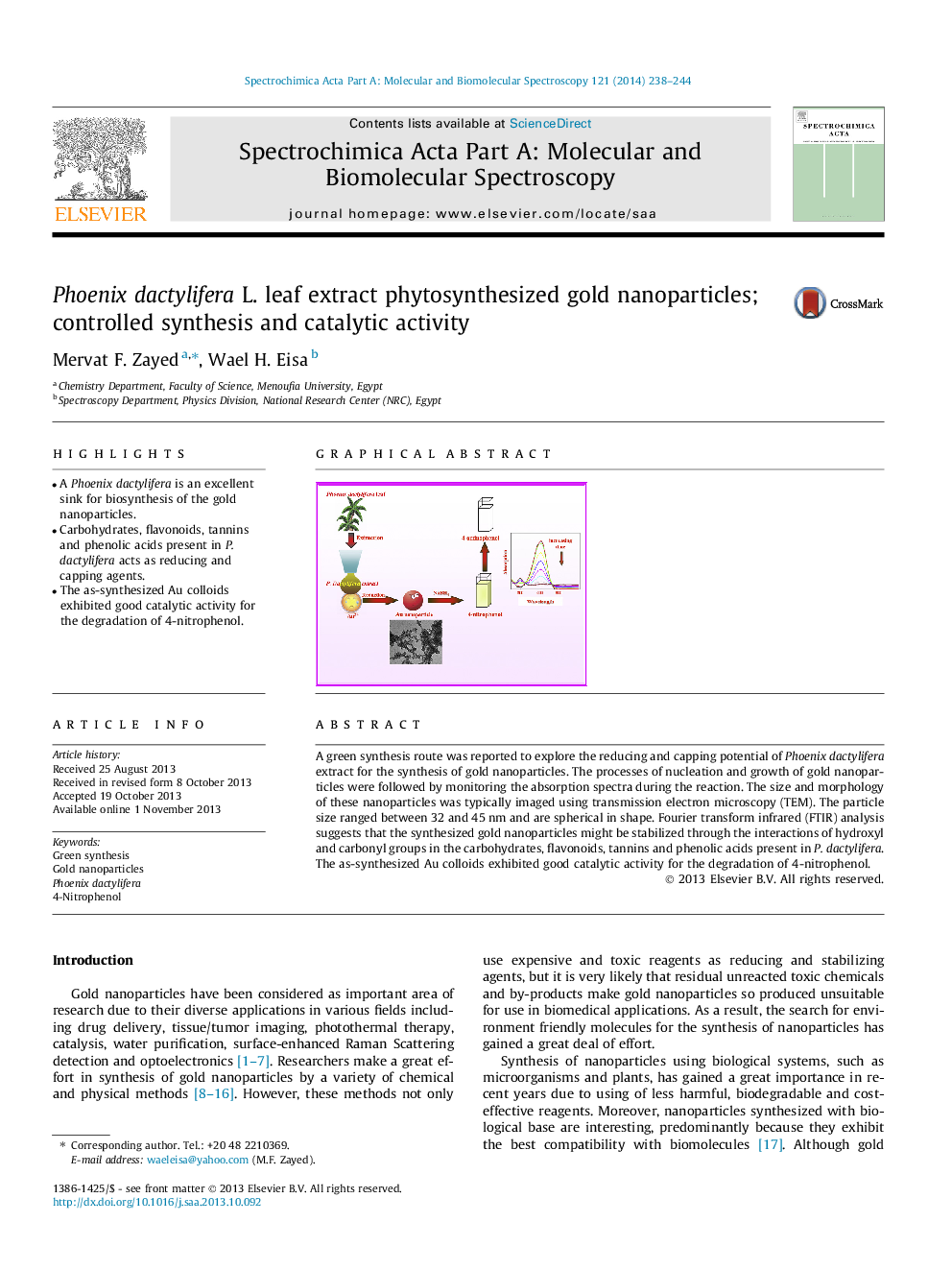| Article ID | Journal | Published Year | Pages | File Type |
|---|---|---|---|---|
| 1230469 | Spectrochimica Acta Part A: Molecular and Biomolecular Spectroscopy | 2014 | 7 Pages |
•A Phoenix dactylifera is an excellent sink for biosynthesis of the gold nanoparticles.•Carbohydrates, flavonoids, tannins and phenolic acids present in P. dactylifera acts as reducing and capping agents.•The as-synthesized Au colloids exhibited good catalytic activity for the degradation of 4-nitrophenol.
A green synthesis route was reported to explore the reducing and capping potential of Phoenix dactylifera extract for the synthesis of gold nanoparticles. The processes of nucleation and growth of gold nanoparticles were followed by monitoring the absorption spectra during the reaction. The size and morphology of these nanoparticles was typically imaged using transmission electron microscopy (TEM). The particle size ranged between 32 and 45 nm and are spherical in shape. Fourier transform infrared (FTIR) analysis suggests that the synthesized gold nanoparticles might be stabilized through the interactions of hydroxyl and carbonyl groups in the carbohydrates, flavonoids, tannins and phenolic acids present in P. dactylifera. The as-synthesized Au colloids exhibited good catalytic activity for the degradation of 4-nitrophenol.
Graphical abstractFigure optionsDownload full-size imageDownload as PowerPoint slide
